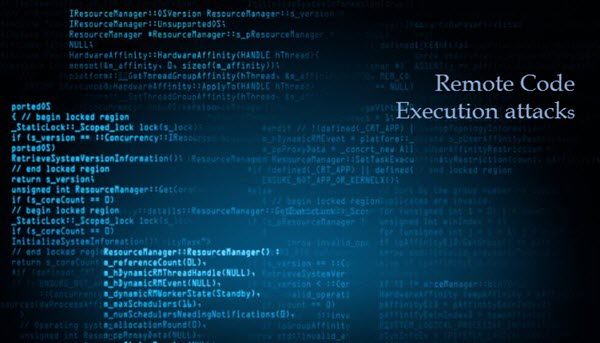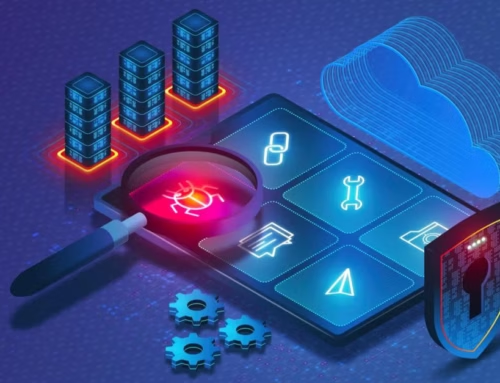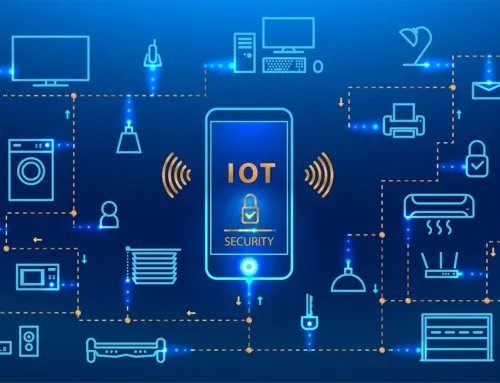
Understanding Remote Code Execution (RCE) in AI Platforms.
Remote Code Execution (RCE) Explained: Understanding RCE Attacks AI Platforms
In today’s interconnected digital landscape, safeguarding your enterprise against cyber threats is paramount. Remote Code Execution (RCE) attacks represent one of the most critical vulnerabilities These vulnerabilities can compromise the integrity of your IT infrastructure, particularly if they involve the operating system. This article delves into the intricacies of RCE, offering insights into how these attacks operate and the vulnerabilities they exploit. By understanding RCE, organizations can take proactive steps to protect their systems and ensure a secure digital future.
What is Remote Code Execution?
Remote Code Execution is a formidable threat where attackers exploit vulnerabilities to execute arbitrary code on a target system from afar. This capability allows an attacker to potentially take control of the system, leading to severe security breaches. RCE is particularly concerning because it enables the execution of malicious code, which can result in data theft, system damage, or even the deployment of ransomware. Understanding the nature of RCE is essential for developing robust strategies to mitigate these attacks.
Definition of Remote Code Execution
Remote Code Execution refers to the capacity of an attacker to execute arbitrary code on a remote system without physical access. This form of attack leverages vulnerabilities found within software or web applications, allowing the attacker to run malicious code as if they had direct access. The implications of RCE are profound, as it can lead to unauthorized data access, system manipulation, and significant disruption to business operations. Recognizing and addressing these vulnerabilities, including deserialization issues, is crucial for maintaining system integrity.
How RCE Works
RCE attacks typically exploit vulnerabilities that allow attackers to execute code remotely, often through the manipulation of serialized data. Some common vulnerabilities include:
- Buffer overflows
- Code injection
- Inadequate input validation
Attackers craft malicious payloads that can be injected into the system through these weaknesses. Once the attacker’s code is deployed, it can perform a range of malicious activities, from stealing sensitive information to compromising the entire system, often through remote code execution vulnerabilities. Effective vulnerability scanning and timely patch deployment are vital in preventing remote code execution attacks and ensuring the safety of IT environments.
Common RCE Vulnerabilities
Common RCE vulnerabilities often arise from poor coding practices, such as inadequate input validation and unpatched software. Vulnerabilities like buffer overflows and code injection flaws, including remote code execution vulnerabilities, are frequently exploited by attackers to gain remote access and execute arbitrary code. Web applications are particularly susceptible, given their exposure to the internet and reliance on user input. To protect against RCE threats, organizations must implement secure coding practices and utilize effective security solutions.
- Prioritize code reviews
- Regularly update software
- Implement robust security measures
These steps are crucial to prevent attackers from exploiting these vulnerabilities.
Types of RCE Attacks
Web Application Attacks
Web applications frequently become the primary target for remote code execution attacks due to their inherent exposure to the internet and reliance on user input. Attackers exploit these vulnerabilities to execute arbitrary code remotely, often utilizing sophisticated injection techniques. Such vulnerabilities allow malicious code to run on the target system without explicit authorization, posing significant risks to data integrity and confidentiality. Organizations must prioritize the following measures to protect against RCE threats in web applications:
- Regular vulnerability scanning is necessary to detect remote code execution vulnerabilities in your systems.
- Implementing robust input validation is vital to mitigate risks associated with deserialization and other vulnerabilities.
Network-Based Attacks
Network-based attacks leverage vulnerabilities in network protocols and services to facilitate remote code execution. Attackers exploit these weak points to execute arbitrary code on the target system, potentially gaining unauthorized remote access. This type of RCE attack can be particularly devastating, as it opens the door for further exploitation and network-wide malware deployment, potentially allowing hackers to deploy malicious code on a target. To mitigate these risks, enterprises should deploy comprehensive network security measures, including intrusion detection systems and timely patch management, ensuring their infrastructure remains secure.
File Upload Vulnerabilities
File upload vulnerabilities represent another conduit for RCE attacks, where attackers upload malicious files to execute code on the system. These vulnerabilities often arise when input validation is insufficient, allowing attackers to bypass security controls and inject malicious code. Once deployed, this code can compromise system integrity and expose sensitive information. Organizations can safeguard their systems by enforcing strict file type restrictions, conducting thorough code reviews, and continuously updating their security protocols to prevent remote code execution attacks.
Identifying RCE Vulnerabilities
Common Indicators of RCE Risks
Identifying RCE vulnerabilities early is crucial for safeguarding systems against potential exploitation by hackers. Common indicators include unexpected application behavior, system slowdowns, or unauthorized access attempts. These signs suggest the presence of code execution vulnerabilities, including deserialization issues, that attackers could exploit. Vigilant monitoring and regular security audits are essential for detecting these risks promptly. By proactively identifying and addressing these vulnerabilities, organizations can prevent remote code execution and ensure their systems remain resilient against cyber threats.
Tools for Detecting RCE Vulnerabilities
Utilizing advanced tools for detecting RCE vulnerabilities is critical in fortifying an organization’s security posture against hackers. These tools perform comprehensive vulnerability scanning, identifying potential weaknesses that could be exploited by attackers to execute arbitrary code. By employing automated scanners and penetration testing tools, enterprises can uncover hidden vulnerabilities before they are exploited. Investing in such technology empowers businesses to anticipate and mitigate cyber risks, ensuring their IT infrastructure remains robust and uncompromised.
Assessing Application Security
Assessing application security is a fundamental step in preventing RCE attacks. This assessment involves a thorough review of application architecture, including code reviews to identify potential vulnerabilities. Organizations must prioritize input validation, regularly update software, and deploy patches to address security flaws. By maintaining a proactive security posture, enterprises can protect against RCE threats and ensure their applications are resilient to exploitation, ultimately safeguarding their digital assets and maintaining customer trust and confidence.
Preventing Remote Code Execution Attacks
Best Practices for Code Security
In the ever-evolving landscape of cybersecurity, securing your codebase against remote code execution attacks is paramount. Best practices for code security involve rigorous code reviews and implementing input validation to mitigate vulnerabilities. Prioritizing regular vulnerability scanning and timely patches ensures that even the smallest exploitable flaw is addressed before an attacker can execute arbitrary code. By adopting a proactive security approach, organizations can protect against RCE threats and secure their IT infrastructure.
Implementing Security Controls
Effective security controls are critical in preventing remote code execution attacks that can compromise sensitive data. Teamwin Global Technologica offers an array of solutions, including robust firewalls, endpoint protection management (EPM), and privileged access management (PAM), tailored to fortify enterprise security. Implementing these controls mitigates the risk of arbitrary code execution by providing layers of defense, ensuring that attackers find it exceedingly difficult to exploit vulnerabilities and gain unauthorized remote access to the system, thus safeguarding critical business operations.
Regular Security Audits
Conducting regular security audits is essential to identify potential RCE vulnerabilities. for maintaining a resilient defense against RCE threats. These audits involve a comprehensive analysis of system vulnerabilities, identifying weaknesses that could be exploited by attackers to execute malicious code. By proactively assessing the security posture, organizations can address potential risks before they escalate into severe breaches. A commitment to regular audits not only enhances security measures but also instills confidence in stakeholders that their digital assets are well-protected against the ever-present threat of remote code execution.
Mitigating RCE Threats
Strategies to Mitigate RCE Attacks
Mitigating RCE threats requires a strategic approach that encompasses both technology and process. Employing advanced detection tools to identify vulnerabilities early and deploying comprehensive security measures, such as robust endpoint security and real-time monitoring, are crucial. In addition, fostering a security-aware culture within the organization empowers employees to recognize and report suspicious activities. By integrating these strategies, enterprises can significantly reduce the risk of RCE attacks and protect their systems from unauthorized code execution.
Responding to RCE Incidents
When an RCE incident occurs, swift and decisive action is necessary to minimize damage and prevent the deployment of malicious code on a target. Establishing a robust incident response plan ensures that organizations can efficiently contain the threat and mitigate its impact. This plan should include immediate steps to isolate affected systems, analyze the attack vector, and apply necessary patches to prevent further exploitation. By maintaining a well-prepared response strategy, businesses can quickly recover from RCE incidents, preserving their integrity and reputation in the face of potential security breaches.
Building a Resilient System Against RCE
Building resilience against remote code execution involves a multifaceted approach to security, focusing on both prevention and response. Organizations must prioritize the continuous improvement of their security infrastructure, integrating cutting-edge technologies with robust security protocols. Regular training and awareness programs for employees further strengthen the human element of security. By fostering a culture of vigilance and preparedness, enterprises can ensure their systems are fortified against RCE threats, delivering peace of mind and safeguarding their valuable digital assets.
5 Surprising Facts about Understanding Remote Code Execution (RCE) in AI Platforms
- RCE vulnerabilities can lead to complete system takeover, allowing attackers to execute arbitrary code on a server.
- Many AI platforms rely on third-party libraries, which can introduce RCE vulnerabilities if not regularly updated or audited.
- Machine learning models can inadvertently expose RCE vulnerabilities through their APIs if proper input validation is not implemented.
- RCE attacks are often stealthy, making them difficult to detect, as they can operate within the normal behavior of the application.
- Developing secure AI platforms requires a combination of secure coding practices and continuous monitoring for potential RCE exploits.
What is remote code execution (RCE) and how does it work?
Remote Code Execution (RCE) refers to a type of security vulnerability that allows an attacker to run malicious code on a remote system. It typically occurs when a system accepts and executes executable code from an untrusted source without proper validation or sanitization, leading to unauthorized access and control over the targeted system.
What are common types of RCE attacks?
RCE attacks commonly include methods such as exploiting web application vulnerabilities, injecting payloads into vulnerable code, and using social engineering tactics to trigger the vulnerability. Attackers may also leverage known RCE vulnerabilities in specific software or systems to execute their malicious code.
How can vulnerabilities that allow RCE be identified?
Vulnerabilities that allow RCE can be identified through various methods, including code reviews, vulnerability scanning tools, and penetration testing. These approaches help detect and prevent potential RCE attacks by uncovering exploitable weaknesses in the code or configurations.
What measures can be taken to prevent remote code execution attacks?
To prevent remote code execution attacks, it is essential to sanitize inputs, apply security patches, and implement strong coding practices. Additionally, using firewalls and intrusion detection systems can help monitor and block malicious activity aimed at executing code on vulnerable systems.
How do RCE vulnerabilities allow attackers to launch further attacks?
RCE vulnerabilities allow attackers to gain a foothold in the system, enabling them to launch further attacks. Once they have executed their payload to the target system, they can manipulate data, escalate privileges, or pivot to other systems within the network, significantly increasing the potential impact of the breach.
What are the risks associated with RCE vulnerabilities?
The risks associated with RCE vulnerabilities are significant, as they can lead to data breaches, loss of sensitive information, and unauthorized access to critical systems. The ability for an attacker to run malicious code on a remote location amplifies the potential damage, making it crucial for organizations to address these vulnerabilities proactively.
What role does sanitization play in mitigating RCE attacks?
Sanitization plays a crucial role in mitigating RCE attacks by ensuring that all inputs and data are properly validated before being processed. This prevents attackers from injecting code containing malicious code into the system, significantly reducing the risk of RCE vulnerabilities being exploited.
How can organizations protect against RCE vulnerabilities in Java applications?
Organizations can protect against RCE vulnerabilities in Java applications by following secure coding practices, regularly updating libraries and frameworks, and conducting thorough testing for vulnerabilities. Implementing security measures such as input validation and output encoding also helps to safeguard Java applications from potential RCE attacks.








